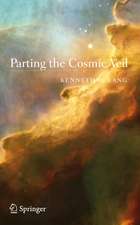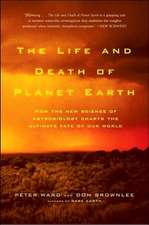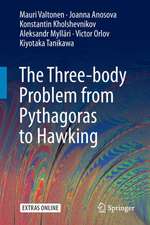Rare Earth: Why Complex Life is Uncommon in the Universe
Autor Peter D. Ward, Donald Brownleeen Limba Engleză Paperback – 10 dec 2003
Preț: 219.03 lei
Nou
41.91€ • 43.76$ • 34.69£
Carte disponibilă
Livrare economică 15-29 martie
Livrare express 01-07 martie pentru 38.90 lei
Specificații
ISBN-10: 0387952896
Pagini: 368
Ilustrații: XXXIV, 338 p.
Dimensiuni: 155 x 235 x 19 mm
Greutate: 0.55 kg
Ediția:2000
Editura: Springer
Colecția Copernicus
Locul publicării:New York, NY, United States
Public țintă
Popular/generalDescriere
n November 12, 2002, Dr. John Chambers of the NASA Ames - search Center gave a seminar to the Astrobiology Group at the OUniversity of Washington. The audience of about 100 listened with rapt attention as Chambers described results from a computer study of how planetary systems form. The goal of his research was to answer a dec- tively simple question: How often would newly forming planetary systems produce Earth-like planets, given a star the size of our own sun? By “Ear- like” Chambers meant a rocky planet with water on its surface, orbiting within a star’s “habitable zone. ” This not-too-hot and not-too-cold inner - gion, relatively close to the star, supports the presence of liquid water on a planet surface for hundreds of million of years—the time-span probably n- essary for the evolution of life. To answer the question of just how many Earth-like planets might be spawned in such a planetary system, Chambers had spent thousands of hours running highly sophisticated modeling p- grams through arrays of powerful computers. x Preface to the Paperback Edition The results presented at the meeting were startling. The simulations showed that rocky planets orbiting at the “right” distances from the central star are easily formed, but they can end up with a wide range of water c- tent.
Cuprins
Contents Preface to the Paperback Edition Preface to the First Edition Introduction: The Astrobiology Revolution and the Rare Earth Hypothesis Dead Zones of the Universe Rare Earth Factors 1 Why Life Might Be Widespread in the Universe 2 Habitable Zones of the Universe 3 Building a Habitable Earth 4 Life’s First Appearance on Earth 5 How to Build Animals 6 Snowball Earth 7 The Enigma of the Cambrian Explosion 8 Mass Extinctions and the Rare Earth Hypothesis 9 The Surprising Importance of Plate Tectonics 10 The Moon, Jupiter, and Life on Earth 11 Testing the Rare Earth Hypotheses 12 Assessing the Odds 13 Messengers from the Stars References Index
Recenzii
The New York Times
"...[the book] has hit the world of astrobiologists like a killer asteroid..."
Newsday (New York)
"...a sobering and valuable perspective..."
Science
"...a startling new hypothesis..."
Library Journal
"...Peter Ward and Donald Brownlee offer a powerful argument..."
The Economist
"...provocative, significant, and sweeping..."
Northwest Science & Technology
"...a stellar example of clear writing..."
American Scientist



















